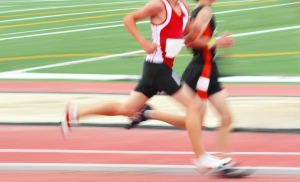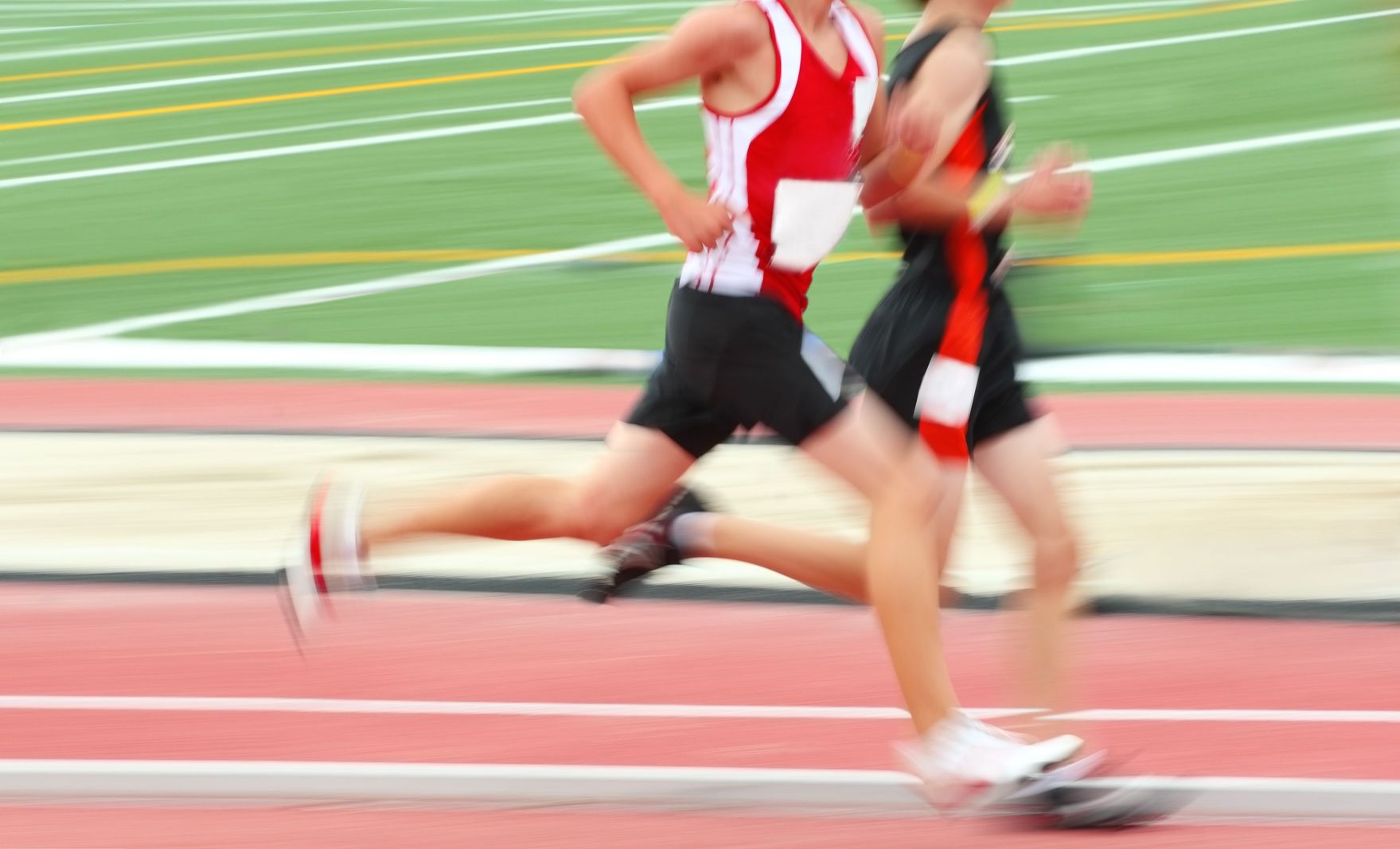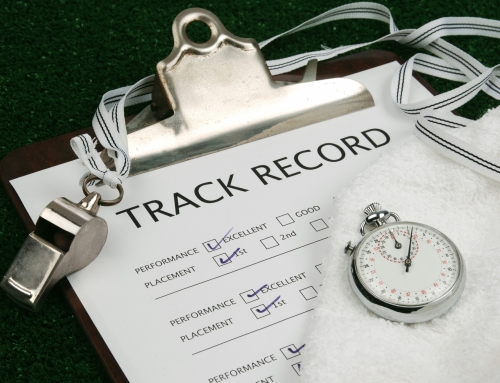How many times have you heard this…”Every runner is different and unique”. Watch a group of runners, even the elites, and you will see a wide range of “styles” and “technique” or what we runners routinely refer to as running form, yet all these runners are getting the job done just the same, right? Or Are they?
Running Styles Vary Widely, But…
Let’s use the elite marathoner group as an example. Seeing a bunch of running styles among this talented group of the world’s best distance runners may lead us to the conclusion that running technique (form) isn’t all that important for marathon success. Or is it?
Actually, there are certain characteristics that are common to the styles of almost all successful marathon runners. Think of it this way…the closer your form adheres to these ideals, the more efficient you will run and the less susceptible you are to injury and fatigue. So, as the thinking goes, if good form goes a long way toward helping you meet your goals, isn’t it worth the effort to periodically assess your running style and, if needed, work to improve it?
What Determines Running Style?
Running “style” is largely pre-determined by your biomechanics, which include: the characteristics of your skeletal structure, your muscle and tendon flexibility and elasticity, the strength, endurance and balance/imbalance of various prime-mover muscle groups, as well as the coordinated contraction pattern of your muscles and the resulting movement of your limbs. Think about it. Running requires a complex orchestrated series of perfectly timed muscle contractions. The movement and positioning of your legs, trunk, arms, and head all combine and synchronize to determine your unique running form.
Reasons To Evaluate Your Form
What are the main reasons to evaluate your running form? We can generally whittle these down to three: 1) to reduce the likelihood of injuries; 2) to minimize wasted energy; and 3) to eliminate obvious imperfections. However, reducing the likelihood of injuries generally isn’t a straightforward process; it necessitates a personal approach, often with a physical therapist well versed in working with distance runners and familiar with their characteristics. Similarly, fine-tuning running technique to improve running economy really requires the assistance of an exercise physiology or performance lab, resources that are not readily available to the average runner. Finally, there are those obvious imperfections that many marathoners possess in their running form. These flaws become magnified as fatigue sets in over the course of running a marathon. By eliminating some of the more obvious flaws, you can improve the flow of your running, thereby reducing the likelihood of your tightening up prematurely and slowing you down over the course of the marathon. We’re talking some very subtle improvements here, not a silver bullet remedy for all your marathon woes. Let me give you an example to illustrate this. I sometimes see runners holding their elbows way out to the side away from their bodies while they run. Now think about this, just try “standing” there holding your elbows out for four hours or more, not even running…think your arms/shoulders might not get a little tight and fatigued?
Quirks And Imperfections
We all possess certain nuances or what I like to call “quirks” in our running “form” some more than others, and usually for a reason. Some style issues are just bad habits that have developed because no one ever told us otherwise. Think way back to your PE classes, can you recall anyone ever instructing you on the “correct” way to run? Unless you ran track (and happened to be a sprinter) in school or college, the answer is probably “No”. Some flaws could also be a result of biomechanical imbalances, musculoskeletal issues, or old injuries. As with most things, there is some debate as to whether or not one should alter their form. More importantly, who’s to say that your running form is not correct or not already naturally optimized to your biomechanics?
As I mentioned earlier, watch most any marathon runner, even the elite professionals, and you will see a wide variety of form variations. Like most things, there is usually some ideal that is strived for especially among the professional and elite competitive runners because seconds count and anything that helps conserve energy expenditure and increases running economy so you can shave off a few seconds is an important consideration in racing. This can be the case even for some recreational runners navigating longer race distances for a PR or BQ, or for that competitive runner that has plateaued in their training and is looking for an edge to help with a breakthrough.
Running Form Improvements
The easiest and safest running form improvements are those that address the obvious imperfections. It should be noted that most of these adjustments concern themselves with the upper part of the body. Just remember, all changes and alterations have the ability to alter your kinetic chain, sometimes to your detriment. It’s often the lower part of the body where making changes can get a little dicey and problematic, particularly when it comes to one’s footstrike. Changes to lower body mechanics, especially if not done slowly, and in a progressive manner, increase the risk of unintended consequences which can lead to a possible new running related injury. I feel this is where the old saying “if it isn’t broken, don’t fix it” is applicable and should be a consideration anytime changes to your running form are contemplated.
Personally, I don’t subscribe to drastic and/or immediate changes to a runner’s form, and really steer away from altering lower body and foot mechanics, but that doesn’t mean there isn’t room for improvement, especially if there are chronic injury issues or gross inefficiencies that negatively impact overall running economy. When musculo-skeletal issues along with a history of chronic injury pre-exists, it is best to enlist the guidance of a health or sports medicine professional before making any changes to your lower body technique or mechanics.
There are some basics that most runners and coaches can usually agree on. These usually concern arm swing, elbow angle, posture, relaxation, not over-striding, etc. The approach should be more of an incremental refinement & fine tuning over time (progression). Is there a perfect running form? Perhaps in a theoretical sense based on an “ideal” runner; but pragmatically speaking, I don’t think so. Again, because we are all unique individuals, physiologically imperfect, flaws and all, a one-size fits-all model won’t always fit.
Some of the more obvious and easily correctable form flaws:
- Tight Shoulders, Neck, Back, Jaw – Relax, relax, relax. Keep your shoulders low and relaxed, don’t scrunch them.
- Head forward of body – Keep your head directly over your body, and run with your chin up and gaze directed ahead of you.
- Forward lean at the waist – Run tall with a straight, vertical, erect posture, but avoid curving the back or slouching as this will inhibit proper hip extension. There can be a very slight forward lean, but this should be from the ankles, not from the waist
- Instability in the trunk – Keep your trunk stable, minimize rotation and keep the hips pointed straight ahead; let the arms and legs swing freely relative to this stable Usually due to weak lower abdominals & gluteals.
- Excessive vertical movement –Try to minimize excessive vertical oscillation (bouncing up and down), note that the faster you run and longer your stride, the more vertical movement there will be. For instant feedback, observe your shadow or the vertical movement of the visor of your cap while running.
- Overstriding – Very few runners actually overstride, those that do are often beginners or have been told to lengthen their stride. With experienced runners, the body generally determines its own optimum stride length. Your feet should land under you, not ahead of your body.
- Tension in arms & hands – Let the arms hang from the shoulder and swing freely in a relaxed fashion. Lightly clench your hand. Don’t make a tight fist. I advise runners to rest the thumb on the index finger as if you were holding a potato chip and trying to avoid breaking it while running which requires staying relaxed.
- Arm crossover – Don’t allow your forward swinging arm/hand to cross the sagittal plane of your body, that’s the imaginary centerline that divides your left and right halves of your body.
- Inadequate or excessive elbow angle – Try to keep the bend in your elbow at roughly +/- 90 degrees throughout the arm swing motion. This is the most efficient angle. Make sure to allow the arm to swing back freely, letting the hand brush your waistband, this also ensures your elbows are kept in and not flying outward.
If you’ve chosen to tweak your form a bit, I’ve found the best approach to fine-tuning a technique is to choose one item to focus on during a particular session or series of workouts. Trying to think and adjust everything all at once during a run is difficult at best and can be disastrous at its worst. Beware, its difficult to change bad habits formed from years of running a certain way, so it will feel very weird and uncomfortable and may have unintended consequences. You essentially have to re-program your neuromuscular system to accept the new behavior and ingrain it…i.e. that means lots of conscious practice, repetition and positive feedback.





